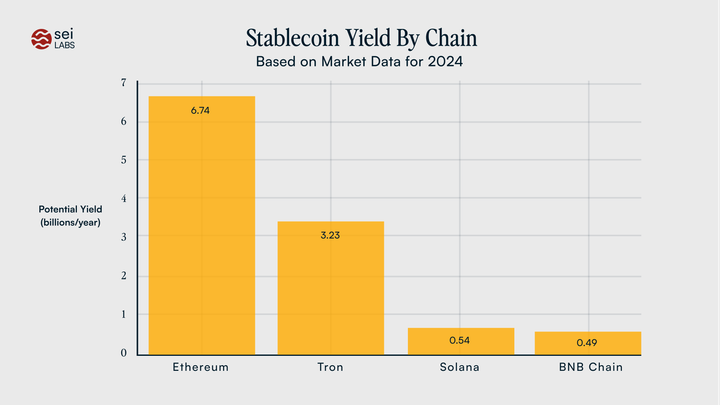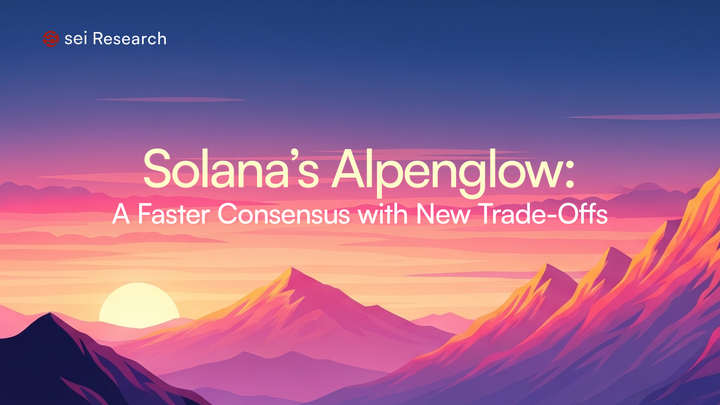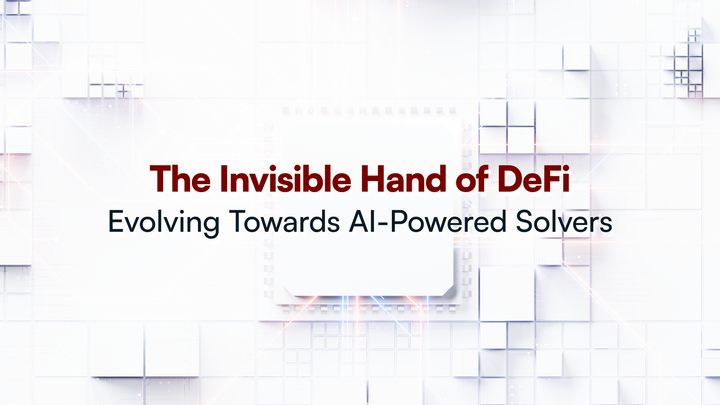Crypto's New Math: From Narratives to REV

Market participants, humans (as long as AI is not conscious and follows humans’ intents), are ultimately the ones that determine the value of an asset and behavioral economics have proven that most humans do not act as rational agents.
When we attempt to evaluate blockchain networks we often fall into the trap of focusing on pure mathematical models such as tokenomics, total value locked, transaction fees, and volume, but narratives are what drive investors’ value perception of an asset, especially in novel technologies the market hasn’t decided how to value them yet. Crypto has been characterized as a speculative bubble.
In this article, we are exploring the different types of economic actors and their respective profiles, how Bitcoin and Layer-1 networks are viewed by market participants, and dive into the power of narratives. Finally, we will go through the history of dominant narratives, where we are now, and the future of blockchain networks’ valuation narratives.
The Human Element in Asset Evaluation
Classical economic theory assumes individuals make decisions based on perfect information and pure self-interest. However, behavioral economics has debunked this notion. Humans exhibit predictable irrationality through loss aversion, herd mentality (FOMO, and FUD), confirmation bias, narrative susceptibility, and more.
Loss aversion: We feel the pain of losses more intensely than the pleasure of equivalent gains
Herd mentality: We follow social consensus even when it contradicts our personal analysis (FOMO, FUD)
Confirmation bias: We seek information that confirms our existing beliefs
Narrative susceptibility: We make decisions based on compelling stories rather than attempting to objectively interpret the data
Profiling Blockchain Market Participants: Motivations and Behaviors
Each market participant has their own profile and personality traits which result in unique market behaviors. For example, consumers maximize utility and value for money, while speculators maximize return on investment. Every market participant is unique, but we can group them into separate categories by economic behavior similarity.
Changing the composition of market participant types can change price action patterns, for example, even though GameStop’s fundamentals were showing the company was headed towards insolvency and logically tradfi hedge funds shorted its stock, retail investors joined the market and acted “irrationally” and unconventionally by performing a short squeeze that hedge funds did not expect.
As institutional involvement deepens in cryptocurrency markets, algorithmic trading has become increasingly dominant, transforming market dynamics in both positive and concerning ways. These sophisticated institutions deploy complex trading algorithms that analyze thousands of variables across multiple timeframes, executing trades at speeds impossible for human traders. While this automation provides liquidity and tightens spreads under normal conditions, it introduces new systemic risks when algorithms interact with each other in feedback loops.
The Power of Narratives
Narratives are interpretive frameworks that shape how market participants understand and value blockchain assets. They function as cognitive lenses through which complex technological innovations are evaluated, contextualized, and ultimately valued.
At their core, narratives usually emerge from subjective axioms or assumptions, for example, the perception that Bitcoin offers a hedge against inflation because of its fixed supply, similar to how traditional investors view gold. These underlying assumptions, when widely adopted, can transform into market-moving forces.
Competing narratives typically coexist during early phases of technology adoption. As a particular narrative reaches critical mass, it becomes self-reinforcing through a reflexive feedback loop: increased adoption validates the narrative, which attracts more adherents, further solidifying it as the dominant interpretation. This consensus narrative then significantly influences price discovery, development priorities, and investment flows.
Consider Bitcoin's evolving narrative:
2009-2013: Digital cash for peer-to-peer transactions
2014-2020: Alternative investment with asymmetric return potential highly correlated with tech equities
2020-present: Digital gold and inflation hedge
Each narrative shift corresponded with dramatic price changes that mathematical models failed to predict. The "digital gold" narrative, for instance, enabled Bitcoin to break from previous valuation models that emphasized transaction volume.
Bitcoin's decreasing volatility appears to be the result of multiple converging factors. The primary drivers include significantly higher liquidity and trading volumes, now averaging over $10B daily, more sophisticated market participants using advanced trading strategies, and the growing institutional presence through ETF inflows.
The chart below shows Bitcoin's correlation with global M2 money supply (offset by 81 days), suggesting Bitcoin is increasingly functioning as a monetary asset responsive to broader liquidity conditions rather than an isolated speculative vehicle. The correlation percentages shown indicate this relationship strengthens over longer timeframes, supporting the "digital gold" narrative as Bitcoin matures into a more predictable store of value whose movements are increasingly tied to macroeconomic liquidity conditions rather than purely speculative trading patterns.
Source: https://x.com/ColinTCrypto
Disruptive Innovation and Irrational Exuberance
Carlota Perez demonstrated in her book "Technological Revolutions and Financial Capital" that disruptive innovations progress through distinct phases before reaching maturity and widespread adoption. The pattern follows a predictable curve from irruption through frenzy, then a turning point leading to synergy and eventually maturity.
Not all crypto project categories are at the same point in this cycle. The frenzy phase is characterized by financial bubbles and speculative investment, while the synergy phase begins to show more practical applications and institutional adoption.
Historically, disruptive innovations are accompanied by speculative bubbles that eventually revert toward fundamental value assessments. Cryptocurrency markets have followed a pattern remarkably similar to the dot-com bubble of the late 1990s, with periods of irrational exuberance followed by significant corrections that weed out projects lacking substantial utility or adoption.
The overall cryptocurrency ecosystem appears to be transitioning from the frenzy to the synergy phase.
History of Narratives, where we are now
Cryptocurrency valuation narratives have evolved through distinct phases, each reshaping how networks are valued. Bitcoin (2009-2013) began as peer-to-peer electronic cash valued on censorship resistance and decentralization. Ethereum's arrival (2014-2016) shifted focus to programmable money and protocol infrastructure, introducing Metcalfe's Law as a valuation framework. The ICO boom (2017-2018) transformed tokens into investment vehicles valued on whitepaper promises and TAM projections rather than utility, culminating in a speculative bubble.
The subsequent crypto winter (2018-2019) forced a return to fundamentals, treasury management, developer activity, and user adoption became crucial metrics. This was followed by DeFi's rise (2020-2021), which introduced TVL and protocol revenue as key metrics, demonstrating blockchain's ability to recreate financial services. The NFT explosion (2021-2022) brought cultural relevance and community engagement into valuation models, while scaling wars (2021-2023) centered on technical performance metrics and the blockchain trilemma.
Most recently, narratives have been overlapping and switching between AI integration (2023-2024), valuing networks on their ability to support decentralized computation and AI systems, and institutional adoption (2023-present), focusing on regulatory compliance, tokenization of real-world assets, and DePin.
Crypto Networks are Not Companies
Unlike traditional companies valued by P/E ratios or discounted cash flows, cryptocurrency networks require different valuation frameworks that account for their unique economic structures and value creation mechanisms. This is where alternative metrics become essential for meaningful analysis.
REV (Real Economic Value) represents a significant evolution in how blockchain protocols' revenue is calculated, accounting not only for base transaction fees but also additional tips paid to validators. Introduced by the Blockworks Research team and popularized by Dan Smith, REV aims to more accurately reflect the monetary demand for blockchain space. While traditional metrics often focus solely on base fees, REV incorporates three key revenue streams: base fees required for transaction execution, priority fees for transaction prioritization, and Tips (off-chain payments to validators to capture MEV opportunities). This holistic approach has revealed substantial hidden economic activity: on Solana, for instance, these tips increased from 30% to over 56% of total fees collected in less than a year.
By including MEV-related revenue in calculations, REV transforms what was once considered an externality or "tax" into a legitimate performance indicator, recognizing that validator compensation through tips reflects genuine economic demand for blockchain services rather than anomalous activity to be excluded from valuation considerations.
Future of Blockchain Networks Valuation Narratives
While narratives continue to play a powerful role in cryptocurrency valuations, a clear shift toward more substantive metrics is occurring as the market matures. The emergence of REV (Real Economic Value) represents this evolution, with investors increasingly demanding comprehensive measurements of blockchain economic activity beyond superficial indicators.
By incorporating previously overlooked revenue streams like validator tips and MEV-related compensation, REV provides a more complete picture of network demand and usage. This transition mirrors the historical pattern seen in traditional tech markets, where early speculative phases eventually give way to fundamental analysis. As institutional capital flows into the space through ETFs and corporate treasury allocations, these sophisticated investors are applying more rigorous valuation frameworks, focusing on demonstrable network economics rather than narrative-driven speculation. This doesn't eliminate narratives' importance but integrates them with quantifiable metrics that better reflect blockchain networks' actual utility and adoption.
Join the Sei Research Initiative
We invite developers, researchers, and community members to join us in this mission. This is an open invitation for open source collaboration to build a more scalable blockchain infrastructure. Check out Sei Protocol’s documentation, and explore Sei Foundation grant opportunities (Sei Creator Fund, Japan Ecosystem Fund). Get in touch - collaborate[at]seiresearch[dot]io



